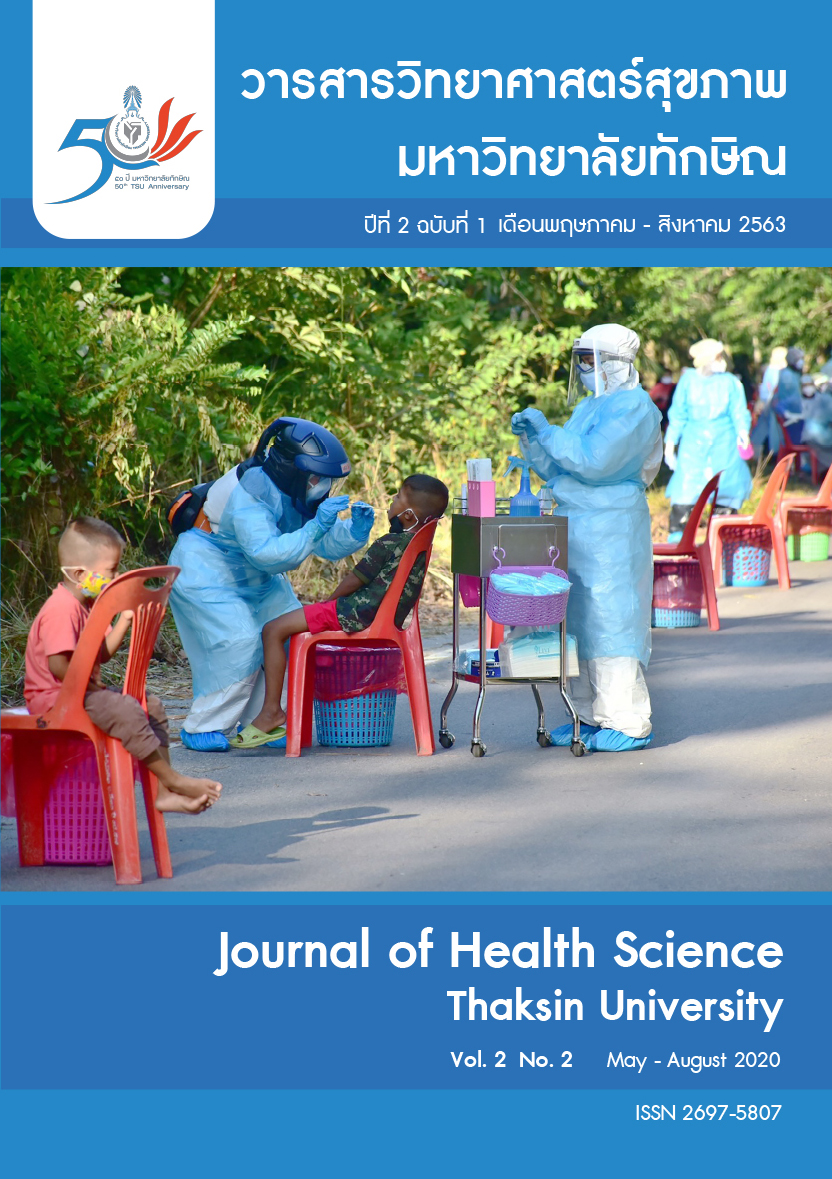Association between Day of Illness Prior to Hospital Visit and Risk of Dengue Shock Syndrome in the Upper Southern Thailand
Main Article Content
Abstract
This study analyzed secondary data to achieve two study objectives: to describe epidemiology of patients with dengue shock syndrome and to determine an association between day of illness prior to hospital visit and risk of dengue shock syndrome. The study population was patients who were registered in national disease surveillance system (R506) in Thailand from 2009-2018 and resided in seven provinces in upper southern Thailand. Descriptive statistics were used to describe epidemiology of dengue shock syndrome patients. Patients’ characteristics with the highest proportion were males, Thai nationality, 15-24 years age group, and students. More than two-thirds were hospitalized. The number of patients peaked in 2013. Nakhon Si Thammarat province had the highest number of patients. An average day of illness prior to hospitalization was 3.4 days. Factors associated with risk of dengue shock syndrome were determined using logistic regression. The results show that day of illness prior to hospitalization was not associated with risk of dengue shock syndrome. Female and those aged 0-14 years had higher risk of developing dengue shock syndrome. Healthcare provider should place special focus on female patients and patients aged 0-14 years. Likelihood of dengue shock syndrome varied significantly between districts with high concentration in districts of Surat Thani province and nearby districts.
Article Details
References
Bureau of Vector Borne Diseases, Department of Disease Control, Ministry of Public Health. Book of Dengue hemorrhagic fever and Dengue shock syndrome for medical and public health. Bangkok. Aksorn graphic and design; 2558. (In Thai)
Ngoenklan R. Spatial Risk Area for Dengue in Thailand: Reviewing Data between 2006 and 2015. Journal of Public Health Mahidol University.2559; 46(2): 153-165. (In Thai)
The Royal College Physicians of Thailand. Dengue Guideline Rcpt 2013 [Internet]. 2556 [cited 2561 Feb 9]. Available from: www.rcpt.org/indx.php/20 12-10-03-16-s3/category/6-2013.html. (In Thai)
Bongsebandhu-phubhakdi C. The risk factors influencing severity in pediatric dengue infection. [dissertation]. Bangkok: Chulalongkorn University; 2006. (In Thai)
Guzman MG, Alvarez M, Rodriguez R, Rosario D, Vazquez S, Vald s L, et al. Fatal dengue hemorrhagic fever in Cuba, 1997. Int J Infect Dis. 1999; 3(3): 130-135.
Carabali M, Hernandez LM, Arauz MJ, Villar LA, Ridde V. Why are people with dengue dying? A scoping review of determinants for dengue mortality. BMC infectious diseases. 2015; 15(1): 301.


